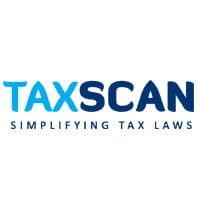Unexplained Income from Rigged Stock Trades: ITAT upholds Rs. 44L Addition [Read Order]
ITAT confirms the additions made under Sections 68 and 69, confirming that the assessee had the burden of proof to establish the genuineness of the transaction
![Unexplained Income from Rigged Stock Trades: ITAT upholds Rs. 44L Addition [Read Order] Unexplained Income from Rigged Stock Trades: ITAT upholds Rs. 44L Addition [Read Order]](https://www.taxscan.in/wp-content/uploads/2024/11/ITAT-ITAT-Surat-Unexplained-Income-Rigged-Stock-Trades-Income-Tax-Appellate-Tribunal-Section-68-of-Income-Tax-Act-Income-Tax-taxscan.jpg)
In a recent ruling, the Surat bench of the Income Tax Appellate Tribunal ( ITAT ) held that additions made under Section 68 of the Income Tax Act are accurate as the assessee failed to explain the source of the credit in the assessee’s account.
Shailesh Chandak, the assessee, filed an income tax return for AY 2014-15 on 30.09.2014, declaring ₹1,39,030 as total income. During scrutiny, the assessing officer(AO0) identified share transactions with Nouvea Global Ventures (NGVL), Pearl Agricultural Ltd (PAL), and Pearl Electronics Ltd (PEL) as not genuine. They were accommodation entries used to route unaccounted money into the books as apparent capital or loans to evade taxes.
The Assessee replied to the show-cause notice and denied the allegation of accommodation entries, claiming genuine share transactions. It was stated that similar transactions occurred in earlier years. For the current year, the assessee reported profits from these companies and losses from other sales, requesting a set-off of losses if profits were considered separately. The assessee also argued that Section 115BBE, restricting set-offs, applied only from 01.04.2017 and was inapplicable to the relevant period.
Know How to Investigate Books of Accounts and Other Documents, Click Here
The AO’s assessment revealed that a search of 32 broking firms showed that they were involved in providing accommodation entries, with 84 flagged scrips, including the three in question. The AO asserted that the assessee benefitted from bogus profit entries through a merger procedure. It was noted that unethical market operators facilitated LTCG/LTCL/profit entries for a commission, evidencing share rigging to convert black money into white.
The AO concluded that the source of the ₹44,91,100 credited to the assessee's bank account was unaccounted cash, adding it under Section 68 and ₹89,822 as unexplained expenditure under Section 69C. On appeal, the CIT(A) found no rationale for the penny stocks' price hike and questioned the transactions' authenticity, citing the companies' lack of a business background and their use as paper entities to route unaccounted funds. The appeal was dismissed due to insufficient evidence from the assessee.
Dissatisfied by the CIT(A)’s decision, an appeal before the assessee filed the ITAT. On hearing the case of both sides, the tribunal held that the shares of NGVL, PAL, and PEl were penny stocks that had no fundamentals to attract such a colossal price. The AO and the CIT(A) found that several people used them to generate bogus LTCG/LTCL/Profit.
Know How to Investigate Books of Accounts and Other Documents, Click Here
The tribunal held that the Authorized Representative of the assessee had not disputed the findings of the AO on how a company could command such a hike in the prices of its shares. This phenomenon was not possible without rigging, as the AO held. The Department's investigation confirmed that the shares were penny stocks used by beneficiaries for bogus capital gains or profits. The AR did not dispute this finding with substantive evidence.
The tribunal relied on the Bombay High Court's judgement in Sanjay Vimalchand Jain, legal heir of Shantidevi Jain vs PCIT, where the assessee had purchased shares of penny stock companies at a lesser amount and sold them at a much higher amount within a year. The assessee had not given proper evidence to explain such a share hike.
The tribunal referenced Chandan Gupta vs. CIT, where the High Court held that unexplained share transaction profits credited to the assessee's bank account could be added as income under Section 68. It also relied on PCIT vs. Swati Bajaj, where the Calcutta High Court upheld additions under Section 68 for bogus LTCG claims on penny stocks, as the assessee failed to justify the sharp rise in share prices.
Know How to Investigate Books of Accounts and Other Documents, Click Here
The AO and CIT(A) conclusively established that the shares transacted by the assessee with NGVL, PAL, and PEL were penny stocks used to route unaccounted money as
share profits. Despite attempting to make the paperwork appear genuine, deeper analysis revealed the transactions were inaccurate.
The two-member bench of the ITAT, consisting of Pawan Singh, the Judicial Member, and Bijayananda Pruseth, the accountant member, held that the Supreme Court's decision in the case of Durga Prasad More is also clearly applicable and held that the addition of 44L under Section 68 is appropriate. The bench also held that since the addition under Section 68 is relevant, the expenditure incurred to earn the above sums will be added under Section 69C as unexplained expenditure. As a result, the assessee's appeal was dismissed.
To Read the full text of the Order CLICK HERE
Support our journalism by subscribing to Taxscan premium. Follow us on Telegram for quick updates
Shailesh Chandak (HUF) vs The ITO , 2024 TAXSCAN (ITAT) 1496 , ITA No.180/SRT/2024 , 25 November 2024 , Shri Kiran K. Shah , Shri Mukesh Jain

